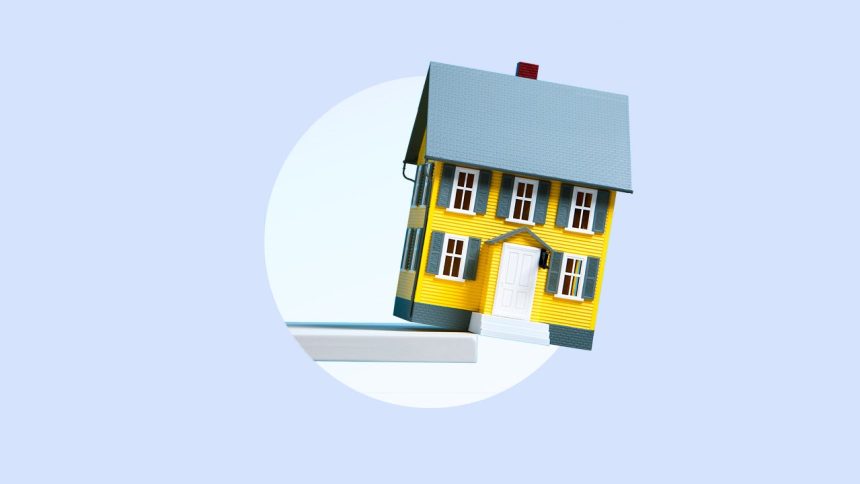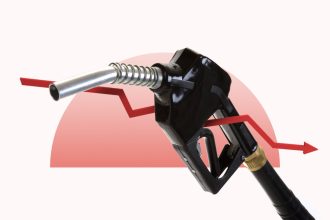When Florida resident Anna Cadieux moved into her Orlando home, she knew her roof had only a couple of years left. After it sustained hail damage, Cadieux filed an insurance claim for a new roof, which her insurer fulfilled after some back and forth. Then, she was dropped.
“We all expect it every year,” Cadieux told Bankrate. In a tight insurance market, she and her neighbors help each other find insurance companies willing to cover them. “We’re all always shopping, and we share agents. When my neighbor got dropped, I gave her my broker.” Cadieux’s story is likely to be familiar to Florida residents. The Sunshine State is experiencing an insurance crisis that has affected homeowners and would-be homebuyers from the Gulf to the Atlantic. However, the struggle to find and keep a home insurance policy isn’t just a Florida problem. Californians can certainly relate — and the issue could be more widespread.
Why do insurance nonrenewals matter?
Home insurance nonrenewal rates and average premiums are good indicators of the health of an insurance market. The two tend to go hand in hand: a report from the U.S. Senate Budget Committee found that “areas with higher premiums are also more likely to have higher nonrenewal rates.”
This can, in part, be credited to insurers limiting business in high-risk states. Property insurance is a private, for-profit industry. When insurers have high loss ratios in a certain area — meaning they’re paying out more in claims than they’re collecting in premiums — it could dissuade them from doing business there. This typically happens in the event of widespread, catastrophic losses like those after a fire, hurricane or other extreme weather event.
In California, for example, major wildfires have pushed insurance giants State Farm and Allstate (along with several others) out of the state. Hurricane-battered Florida faced a major insurance exodus as well, but an influx of new companies could help patch the issue.
Although the U.S. Senate Budget Committee found a strong correlation between high nonrenewals and extreme weather losses, the American Property Casualty Insurance Association (APCIA) disagrees.
“Collecting and analyzing homeowners insurance nonrenewal data does not provide relevant information tying rising insurance losses to climate risk,” APCIA President and CEO David A. Sampson said in a statement. “There are many varying factors impacting insurers’ nonrenewal decisions.”
It’s true that insurance nonrenewals are a complex issue. Largely, insurance companies leave areas where it is no longer profitable to write new policies — but why it’s no longer profitable can stretch beyond extreme weather losses. Legal system abuse and third-party litigation funding have also played a role in making home insurance more expensive, particularly in states like Florida and Louisiana. Even so, natural disasters were responsible for 97 percent of insured losses in 2024, costing the U.S. around $140 billion — a steep increase from the inflation-adjusted 30-year average of $61 billion. And 2025 could very well outpace 2024. This January, Los Angeles experienced historic wildfires that caused an estimated $40 billion in insured losses. This is all before hurricane season, which isn’t until June.
One record-breaking high after another — the consequences are devastating. The destructive forces of climate change are becoming increasingly evident, as backed up by science. Societies need to prepare for more severe weather catastrophes.
— Thomas Blunck, Board of Management Member for Munich Re, a global reinsurance company
Where are the most home insurance nonrenewals?
Florida, Louisiana, North Carolina, California and Massachusetts had the highest nonrenewal rates in 2023, according to the budget committee’s report. Homeowners in these states had a greater than 1 in 100 chance of being dropped by their home insurance company. The committee’s report also found that nonrenewal rates were higher in coastal counties and those with high wildfire risk.
Rhode Island was ranked eighth in terms of nonrenewals. Average premiums in the Ocean State increased more than 25 percent from June 2023 to January 2025, compared to a less than 7 percent gain in the national average cost of home insurance in the same period, according to data from Quadrant Information Services. Utah ranked 16th for nonrenewals, and its average premium rose by more than 18 percent.
The uninsurability domino effect
Insurance may have once been an afterthought in the home-buying process, but for some, that’s no longer the case. The implications of a national home insurance crisis stretch far beyond just high home insurance bills; it throws home affordability into question.
If you use a mortgage to purchase your home, your financial lender will likely require you to carry an insurance policy as a condition of your loan. A report from First Street Foundation found that from 2013 to 2022, insurance costs accounted for around 20 percent of mortgage costs. Previously, that figure was around 7 to 8 percent.
It may come as little surprise, then, that 56 percent of non-homeowners say lack of sufficient income is keeping them from owning a home, according to Bankrate’s 2024 Home Affordability Report. Higher home insurance costs would only push the dream of homeownership further out of reach.
Lack of insurance availability could also tank property values, Dr. Sean Becketti, former chief economist of Freddie Mac, said in a statement to the U.S. Senate Budget Committee. “A large share of homeowners’ wealth is locked up in the equity in their homes. If those homes become uninsurable and unmarketable, the values of the homes will plummet.”
“Unlike the experience of 2007-08, these homeowners will have no expectation that the values of their homes will ever recover,” said Becketti. The same report from First Street estimated that climate change could eliminate $1.4 trillion in property values by 2055 due to soaring insurance prices and a change in consumer demand.
Insurability has a major effect on property values because mortgage lenders require a borrower to have homeowners insurance. If there are no insurers to cover a property, prospective home buyers won’t be able to get a mortgage to purchase the property. This inevitably leads to declining property values because there just isn’t enough demand from cash-only buyers to risk investing in a property that won’t be covered in the event that the home is damaged.
— Andrew Dehan, Bankrate Mortgage Analyst
Tips on how to keep your home insurance policy
Cadieux’s strategy of asking your neighbors about their home insurance coverage can be a great first step. But, there’s more you can do to help hang onto your policy.
- Save your claims for major losses: Filing a home insurance claim could make you seem risky to your insurer, and higher risk usually means a higher chance of getting dropped. If you can find another way to finance smaller repairs, like getting a HELOC, it could help you hang onto your policy. Treat insurance like it’s there for major losses, not smaller repairs.
- Consider your deductible: Your deductible represents how much money you are on the hook for when you file a claim. Not only can a higher deductible help lower your premium, but it can also prevent you from filing smaller claims.
- Be proactive: Mitigating damage through preventable maintenance like cleaning your gutters, getting a roof inspection and trimming your trees could make you less of a risk in the eyes of your insurance company. If you’re in wildfire country, create a defensible space around your property.
- Set up automatic payments or pay ahead of time: Missing a payment could get you dropped by your home insurance company while your policy is still active. Setting up automatic payments or paying for the entire policy ahead of time can help lower the chance you’d forget to pay a month.
- Check your home’s CLUE report: A Comprehensive Loss Underwriting Exchange (CLUE) report can shed light on your property’s claims history, which can help you spot potential problems before they turn into claims. It can also show you the outcome of previous claims; for example, maybe the previous owners filed a roof claim that resulted in a full roof replacement.
Learn more: What to do if you are dropped by your home insurance company
Methodology
Bankrate utilizes Quadrant Information Services to analyze February 2025 rates for all ZIP codes and carriers in all 50 states and Washington, D.C. Quoted rates are based on married male and female homeowners with a clean claim history, good credit and the following coverage limits:
- Coverage A, Dwelling: $300,000
- Coverage B, Other Structures: $30,000
- Coverage C, Personal Property: $150,000
- Coverage D, Loss of Use: $60,000
- Coverage E, Liability: $500,000
- Coverage F, Medical Payments: $1,000
The homeowners also have a $1,000 deductible, a $500 hail deductible and a 2 percent hurricane deductible (or the next closest deductible amounts that are available) where separate deductibles apply.
These are sample rates and should be used for comparative purposes only. Your quotes will differ.
Read the full article here
















